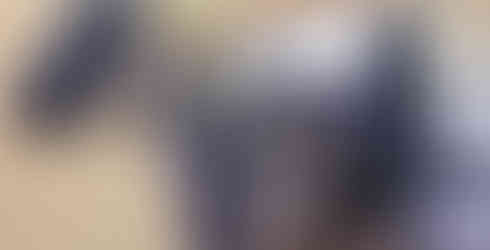Frustration: My best friend
- Kathy Ellem
- Dec 16, 2019
- 3 min read
I decided long ago that I needed to make frustration my best friend. This is because I could see that I wouldn’t survive as a painter if I couldn’t get past the kind of frustration and disappointment that comes with continuously making mistakes. Early on, I had a success rate of roughly 50%. Finding the wherewithal to battle through the fact that half of my work was less than great, and balancing this with continuously seeking to push forward and improve on previous successes, was a tricky tight-rope to walk. To this I could also add balancing the quest to make sales, while not becoming sucked into producing art just for the sake of sales. When I took it all into account, being an artist suddenly seemed pretty tricky.
Instead of just chucking in the towel and going back to drawing stick figures in the margins of notebooks, I realised that I have a bigger 'stubborn bone' than my pity one. I accepted that while some other people seem to be able to do this thing called art so much more easily than me (and with so much more flare), that I don’t have amazing talent just oozing out of me. And having recognised that, I realised that with extra time and focused effort I could actually be an artist — and I could add a personal note, flair, or touch, to my art. Every painting is imbued with my concern and love for the planet, agriculture, family and friends. I don’t need to write a thesis on each painting, I just share the pleasure of putting a brush on canvas.
So, how do I deal with frustration?
Feel it: First you have to feel the frustration, allow it to happen, and then accept that there is almost certainly something that can be done about it — even if it’s throwing the painting down on the driveway and running over it a couple of times in the car. I also accept that it might take me a little longer to make art than some others, but that I’m committed to learning how.
Inspiration: When facing frustration, it also helps to turn to sources of inspiration. I have digital folders of artists' work that I find appealing. Often times I’ve come to learn that the artists themselves are genuinely beautiful people, with similar struggles to myself; and all have said that 'brush mileage' tells the truth. I delve into those folders, and instead of feeling overwhelmed at their superior ‘talent’ I’m drawn to the pure pleasure I feel in looking at their work, and finding what elements really speak to me.
Break it down: The next thing I do is 'break down' the failed artwork. Once I have enough emotional detachment from whatever epic failure has happened, I try to pinpoint at least one element that was not successful. The best thing at this stage is to put the gloves on, and go again as soon as possible to try to overcome this issue.
Slow down: Often times I’ve found that impatient drawing, or the hurried 'laying in' of paint in the initial stages, done with the thought that I can 'fix it later' has cost me more time than if I’d just slowed down and got it right from the start. To avoid failure from the beginning, I remind myself to slow down.
Walk away: Frequently, stepping away from the painting and looking at it from a distance allows to you identify and fix mistakes long before they become too entrenched. This is why I paint standing up. Other artists use a mirror suspended from the celling behind them so they can turn around and look at the mirror image of their painting, which also helps. A more modern approach is to take a photo with your phone and view it on the screen. Anything that can give you sufficient distance to see the work-in-progress with 'fresh eyes' helps.
Goals: the dreaded g word. My goals are what propel me forward even when things look awful. I have simple goals, like developing technique or increasing vibrance or accuracy. I also have goals that are very difficult — for example, at the moment, to find an interesting and heartfelt approach to portraiture, for no other reason than I’d like to be able to paint people who interest me and because portraiture was the next impossible thing.
Frustration is balanced with the excitement of discovering something new, or completing a next level painting, so when I'm frustrated, and have finished 3 new, uninspired, awkward paintings (actual fact), I remind myself that a breakthrough is around the corner and it maybe the next painting.









Comments